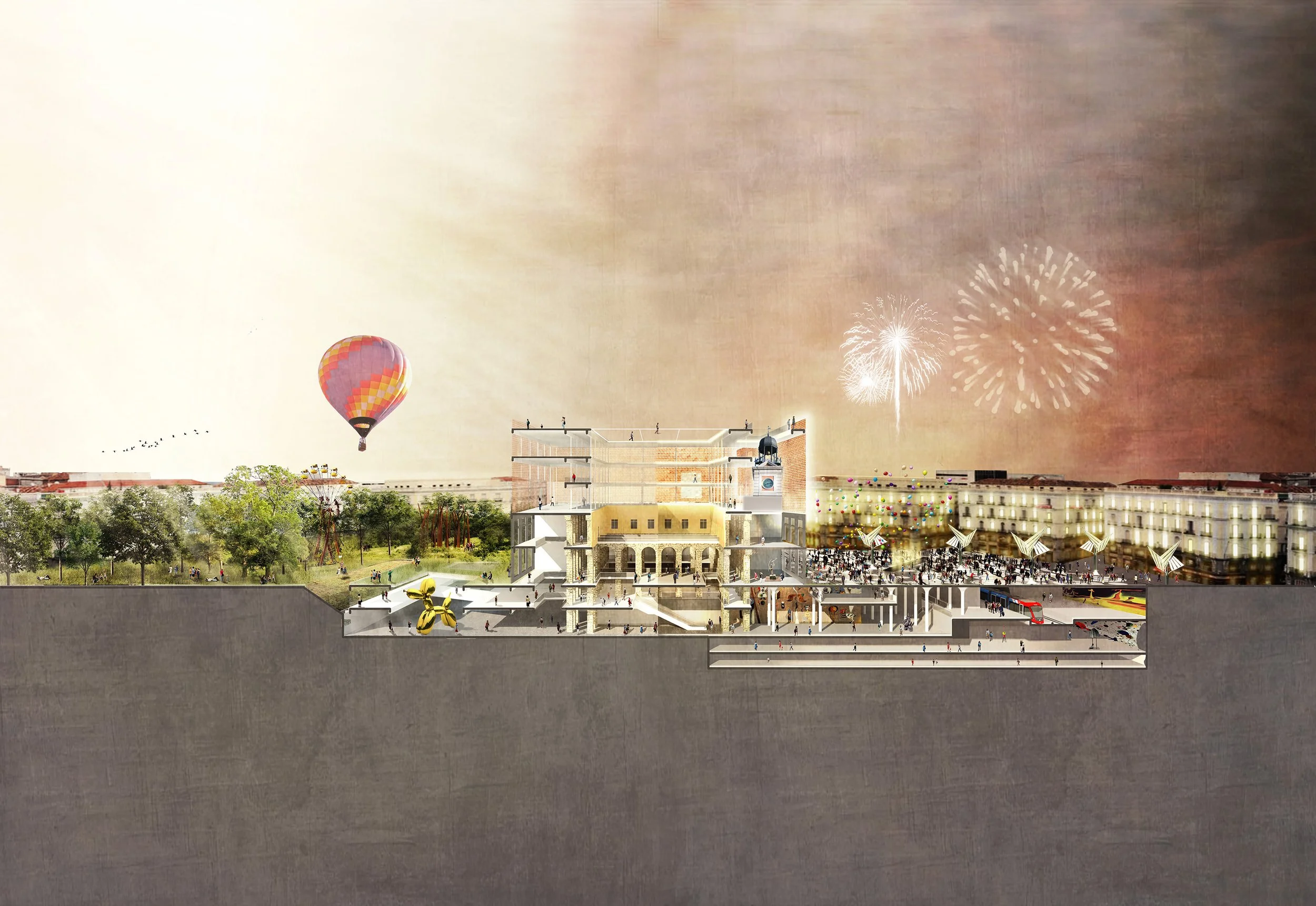kaboom!
A metropolitan-scale square and an urban forest.
Madrid, Spain.
2013
/// Puerta del Sol urban renovation.
Project: adjkm, Ruy Porto, and Javier Guerra ///. Caracas Team: Alejandro Méndez, Daniel Otero, Khristian Ceballos, Mawarí Núñez, Yoryelina Moreno, and Josymar Rodríguez ///. Madrid Team: Ruy Porto and Javier Guerra ///. Organizers: Alcaldía de Madrid ///. Phase: International ideas competition ///. Surface: 36.000 m² ///. Program: Landscape, public space, cultural facilities, and parking.


